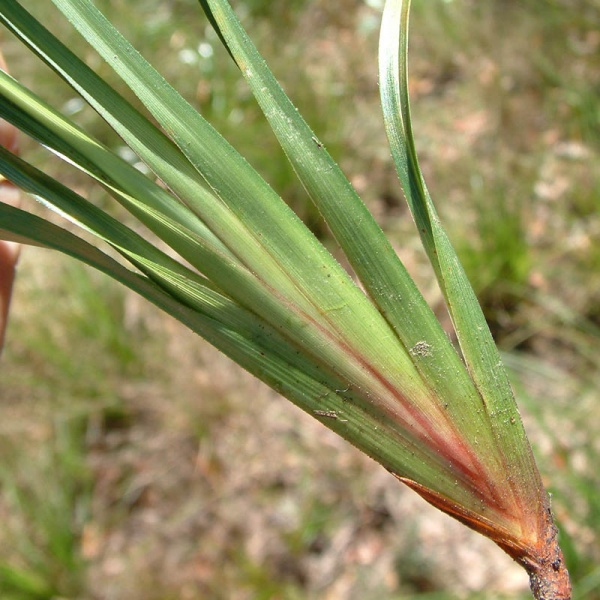Scientific Name: Dianella caerulea
-
Pronunciation:dee-ah-NELL-ah sah-RULE-ee-ah
-
Common Name:Common flax lily



-
Derivation:Dianella: Diminutive of Diana, the virginal Roman goddess of the hunt and the moon. Original species found in French wood, thus the hunting association. caerulea: dark blue colour
-
Type:
-
Family:PHORMIACEAE
-
Flowers:Blue dark blue to green to white - warmer months
-
Fruit:Berry - can be injurious to the liver.
-
Vegetation Type:Wet and Dry Eucalypt Forest on sandy soils,
-
Species List:Leslie Drive Roundabout, EdingtonDr, Cooroibah, Weyba Esp, SBHS, W2, Bush food, Peregian Boardwalk, Wooroi Day Use Area Tracks, NNP Parkedge/Alex, Sunshine Beach Primary, Cooroy Primary School, Cooroibah26.4.09, Kingfisher Bay Resort, Wooroi Palm Grove, Cooloothin Corner, Banana, Upper Mt. Tinbeerwah, Tewantin Forest Gyndier, Fraser Island, Mill Point, Johns, Cooroibah Conservation Park, Cooroibah Conservation Park, Cooroibah Bushland Reserve, Cranks Creek, NNP Viewland/Brunjes, Boreen Point, NNP Tanglewood, Noosa Banks, Dandaloo, Arthur Harrold NR, Girraween, Stratford Park, NNS, Heritage Park,
Cultural Notes
TAKE CARE! Some information about bush foods and medicines may be anecdotal. Correct identification and preparation is essential:
Bush food: Blue berries eaten raw when ripe (but can be injurious to the liver according to Brisbane SGAP). roots pounded cooked and eaten.
Identification Notes
Flowers held in characteristically close inflorescence erect conspicuously exceeding foliage. ||Leaf blades have finely toothed margins. ||Stem leaf arrangement distinctive.||Flower filament yellow. Anther pale yellow/brown.||
Associated Fauna
Butterfly host plant: Large dingy skipper, Yellow banded dart. Lewin's Honeyeater enjoys the fruits of this plant.
Landscaping Notes
Noosa Council Preferred Species list . ||Suitable plant for appropriate soil conditions (see Vegetation type) Fire retardant species. ||Low tufting plant, suckering to form clumps in well drained sites. ||Useful for protected seaside planting.||Propagation is from seed, ripening in summer and autumn, and germinating easily. lumps may also be divided. It will grow in sun or shade in a variety of soils.||Feature foliage||Successfully propagated by Coolum Community Native Nursery.|Successfully propagated by Tin Can Bay City Farm Nursery.|Successfully propagated by Florabunda Bushcare nursery Woombye|Successfully propagated by Noosa & District Landcare|Successfully propagated by Mooloola Native Nursery.||Successfully propagated by Barung Landcare||


